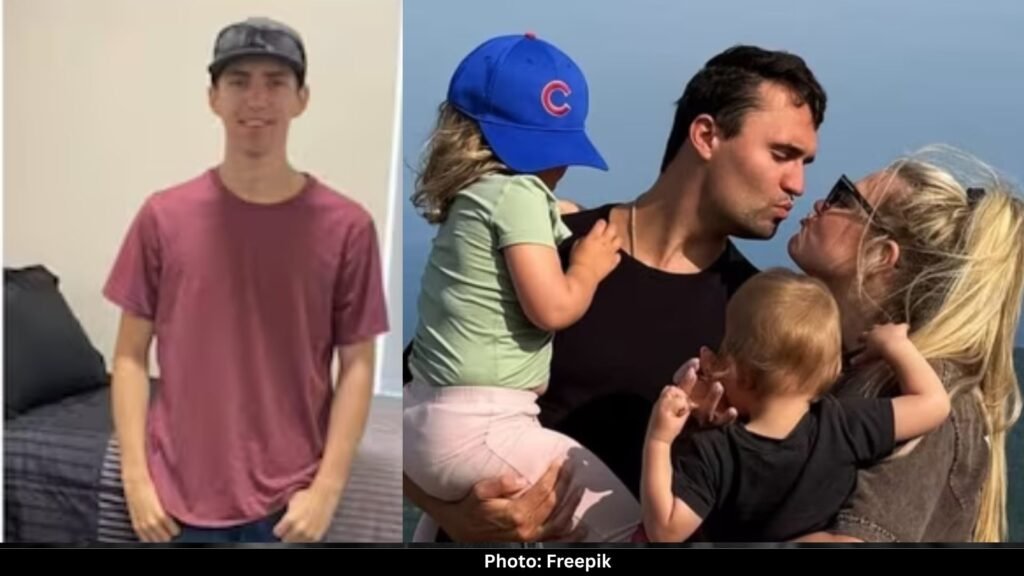On Wednesday afternoon, a single gunshot ripped across the Utah Valley University campus. Conservative activist Charlie Kirk fell, and thousands of people who had gathered for his event scattered in panic. What began as a sunny day of speeches and slogans ended in confusion, sirens, and a desperate search for a gunman who had seemingly vanished into thin air.
The manhunt that followed wasn’t ordinary. Within minutes, the FBI was swarming the area. Planes, drones, evidence labs on the East Coast, hostage-rescue teams—Washington threw everything it had at the case. Kash Patel, the director of the FBI and a longtime ally of Kirk, called it “historic.” He praised the speed, the manpower, and the technology.
The breakthrough didn’t come from a drone or a lab. It came from a phone call. A family member of Tyler Robinson, the 22-year-old accused of shooting Kirk, confided in a friend, who then tipped off local authorities. That simple act ended a 33-hour chase that had stretched from one end of Utah to the other.
What this really means is that behind the dramatic press conferences and the flashing lights, the investigation unfolded in a way that’s both familiar and messy. Big cases are rarely solved by one heroic action or one brilliant team. More often, they end the way this one did—with a relative who couldn’t keep a secret.
How a Rooftop Shooter Shook a Campus
The attack itself was as sudden as it was chilling. Just after noon, Robinson climbed onto a rooftop overlooking the campus event. Dressed in jeans, a dark shirt, a hat, and sunglasses, he looked like another face in the crowd until he wasn’t. He raised a bolt-action rifle, aimed, and fired into the gathering.
The chaos was instant. People ducked, screamed, and rushed for exits. Security hustled Kirk’s team away while campus officers scrambled to figure out where the shot had come from. Within minutes, the shooter was gone. Witnesses saw a man leap from the roof and vanish into nearby streets.
That vanishing act bought Robinson precious time. It also created a fog of confusion that hung over the case for hours. Early reports were scattered. Police briefly detained the wrong people—first a local eccentric known for stirring trouble, then a bystander who had nothing to do with the shooting. Patel even announced on social media that a suspect was in custody when, in fact, no one had been arrested.
In the first critical hours, the shooter’s escape looked almost effortless. But those hours would later become the hinge on which the entire case turned.
Inside the 33 Hours of Chaos
From Wednesday afternoon until late Thursday night, Utah was gripped by uncertainty. Law enforcement agencies set up command posts, poured over surveillance footage, and combed through neighborhoods. Officers searched backyards, chicken coops, even half-built houses on nearby construction sites. Helicopters buzzed overhead.
The FBI’s arrival only amplified the spectacle. Within sixteen minutes of the shooting, federal agents were coordinating with campus police. They flew pieces of evidence across the country to labs. They pulled in fingerprint experts and video analysts. Drones scanned rooftops.
But while the machinery of federal law enforcement was humming at full throttle, the investigation itself stumbled. The FBI had usable images of the shooter by Wednesday night but didn’t release them to the public until midday Thursday. Patel himself scolded his team for sitting on the photos. He believed that getting them out earlier might have pressured Robinson’s family to act sooner.
Meanwhile, the rumor mill churned. Media outlets reported that cartridges left behind by the shooter carried “transgender” slogans. Later, lab tests showed something different: random phrases mocking fascism, one cartridge with a crude joke, none of them adding up to a coherent manifesto.
For the public, the hours dragged on. For law enforcement, they were exhausting. Officials admitted privately that they had no idea if the gunman was still in Utah.
The FBI’s Muscle Meets Local Instinct
Here’s where the story takes a turn. The FBI, with all its muscle, gave the search a national profile and resources smaller departments could never dream of. Planes, forensics, logistics—those mattered. They kept the search moving and ensured that evidence wouldn’t be lost.
But the real pivot came from local ties. Utah’s sheriffs, police chiefs, and deputies have roots in their communities that federal agents don’t. When a Robinson family member confided to a friend about Tyler’s involvement, that friend didn’t call Washington. They called the Washington County Sheriff’s Office.
This mix—federal firepower and local instinct—is what solved the case. The FBI may have put pressure on Robinson by releasing surveillance images. But it was the sheriff’s office that picked up the tip and ran with it. Within hours, investigators had verified the claim against video evidence, spoken to Robinson’s roommate, and retraced his steps back to the campus.
False Starts and Frayed Nerves
Every big investigation comes with mistakes. This one was no exception.
First came the misidentifications. A campus gadfly was arrested, then released. Another man briefly became a “person of interest” before being cleared. Then came Patel’s premature social media post declaring the suspect was already in custody. Local officials contradicted him in real time at a press conference, adding to the confusion.
Inside the command center, tension ran high. Patel and his deputy Dan Bongino reportedly scolded field agents for sitting on photos of the shooter for nearly twelve hours. Patel himself, despite his law-and-order bravado on camera, had added to the mess with his rushed online announcement.
These slip-ups didn’t derail the case, but they revealed the messy underbelly of what the public often imagines as a smooth, surgical manhunt. In reality, it was fraught with missed signals, bad calls, and overextended officers who hadn’t slept in days.
The Rifle, the Bullets, and the Myths Around Them
Investigators eventually found the weapon ditched near the campus: a bolt-action rifle with several unfired cartridges scattered nearby. Media outlets pounced on the story that the bullets carried ideological messages, feeding speculation about the shooter’s motives.
But the lab results painted a stranger picture. Instead of a coherent political statement, the engravings read like internet graffiti. Some mocked fascism. Others were juvenile taunts. One read, “If you read this, you are GAY Lmao.”
Far from clarifying Robinson’s mindset, the bullets only deepened the sense of confusion. Was he making a statement, or trolling? Was he trying to be taken seriously, or to muddy the waters?
For investigators, the focus shifted away from the engravings and back to the basics: who Robinson was, how he planned the attack, and why he targeted Kirk.
Family Secrets Spill Into the Open
In the end, family ties cracked the case.
By late Thursday, a Robinson relative confided to a friend that Tyler had either confessed outright or strongly implied he was behind the shooting. That friend contacted the Washington County Sheriff’s Office.
Investigators quickly verified the claim. They matched surveillance footage of Robinson arriving at the campus with his family’s description. They checked in with his roommate, who recalled Robinson joking on Discord about stashing a rifle and engraving bullets. They dug through his recent conversations and discovered he had spoken bitterly about Kirk’s upcoming appearance in Utah.
What had started as a mountain of 7,000 tips suddenly narrowed to a single, urgent lead.
When a Suspect Walks Himself In
By Thursday night, officers were racing down to Washington County, three hours south of the crime scene. But Tyler Robinson didn’t wait for them.
Instead, he transported himself to the sheriff’s office and surrendered. Investigators described him as compliant and calm. He wasn’t violent. He didn’t resist. He seemed almost resigned.
Officials praised the family and the friend who helped steer him toward surrender. “They did a great job of helping him come to a positive resolution,” Beau Mason, Utah’s public safety commissioner, said. “It avoided further danger to the public.”
By 10 p.m., Robinson was in custody, and the frantic 33-hour search was over.
The Politics Behind the Pursuit
What made this case “historic,” as Patel called it, wasn’t the speed of the arrest or the tools used. It was the politics.
Charlie Kirk wasn’t just another victim of gun violence. He was a prominent conservative activist, close to Donald Trump, a constant figure in America’s cultural battles. His killing wasn’t just a crime—it was a political earthquake.
The FBI’s unusually heavy presence reflected that reality. Patel himself was a friend of Kirk’s. Trump broke the news of the arrest on Fox before local officials could. Every move was amplified by national media and shaped by partisan lenses.
That political weight guaranteed resources. It also magnified every mistake. In a less high-profile case, Patel’s premature announcement might have been a blip. Here, it became a headline.
What This Arrest Really Says About America Right Now
So what do we make of this?
The investigation shows how law enforcement works when the spotlight is blinding. Federal agents can bring unmatched resources, but local relationships and human instincts still carry the day. Tips from friends and family often matter more than drones or forensic labs.
It also shows how messy justice can be. Mistaken arrests, late photo releases, clashing public statements, the process was anything but smooth. And yet, despite the frayed nerves and false starts, the pieces came together.
Finally, the story underscores how politics now permeates everything. The killing of a conservative activist by a young man with unclear motives instantly became more than a crime scene. It became a symbol, a rallying cry, a dividing line.
That’s the uncomfortable truth. Behind the headlines about speed and technology, what really solved the case was something as old-fashioned as a family secret whispered to the wrong person.
Read More: Why Protests Over Migrants Are Exploding in the UK Right Now




